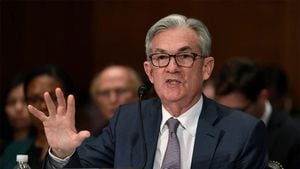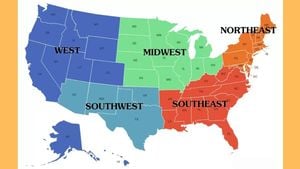Donald Trump’s second term as President of the United States is drawing significant attention, particularly from Southeast Asia. After securing what he describes as an "unprecedented and powerful mandate" by winning 312 electoral college votes against Vice President Kamala Harris's 226 votes, Trump's return promises to be turbulent. This mandate fuels his determination to implement policies shaped by his first term, yet the specifics of these initiatives remain unclear, especially for nations like Indonesia, Vietnam, and Thailand.
During his initial presidency, Trump famously displayed little interest in Southeast Asia, preferring to engage with issues he felt were more pressing, such as the Russia-Ukraine conflict. Notably, his absence from ASEAN summits and failure to appoint U.S. ambassadors to key Southeast Asian nations raised concerns about America's commitment to the region. With many of Southeast Asia’s economies intertwined with both the U.S. and China, the stakes are high for these nations as they grapple with potential policy shifts under Trump 2.0.
The economic impacts could be severe, particularly with Trump’s proclivity for imposing tariffs. He once described tariffs as "the most beautiful word in the dictionary," and should he pursue similar aggressive trade policies as before, Southeast Asia, which has recently enjoyed a boon from the U.S.-China trade war, may find itself caught between conflicting demands from both powers. For example, countries like Vietnam and Thailand have increased their exports to the U.S. significantly between 2017 and 2023; now, they might face tariffs up to 60 percent on imports from China, which relies on many components sourced from these nations.
The bleak outlook for Southeast Asia isn't limited to trade issues. Trump's skepticism toward climate change initiatives and foreign aid could mean reduced assistance for development programs, including those focused on energy transitions which were previously under the Biden administration. The Just Energy Transition Partnerships (JETP), aimed at helping countries move toward cleaner energy sources, primarily Vietnam and Indonesia, could be at risk if the Trump administration opts to cut funding for foreign initiatives.
Security and defense also pose a complex dilemma for Southeast Asia under Trump 2.0. His previous administration was infamous for challenging the status quo of U.S. alliances, often labeling allies as free riders. Given the enhanced military collaboration and shared objectives nurtured under Biden, Southeast Asian countries might need to rethink their strategies, especially the Philippines, which has strengthened its ties with the U.S. amid rising tensions with China.
Trump’s reliance on advisors with strong anti-China sentiments could lead to intensified military posturing. While he had previously ramped up maritime operations to counter excessive claims by China, it remains to be seen whether these efforts will continue. If Trump's approach becomes more aggressive, it may force ASEAN nations to re-evaluate their own relations with China.
Interestingly, Southeast Asia had managed to navigate the rough waters of Trump 1.0 relatively well, adapting to the shifting dynamics of international trade and investments. Yet, with Trump's enhanced confidence following his election win, there are fears he might enforce even sterner policies without adequate consideration of potential fallout for these countries.
The incoming administration's stance on trade, climate change, and defense will likely affect how Southeast Asian governments respond. They will need to balance their relationships with both the U.S. and China, all the more complicated under the looming unpredictability associated with Trump’s policies. The potential for economic decoupling between the U.S. and China could also spell disaster for countries like Malaysia, Vietnam, and Singapore, which rely heavily on trade with both nations.
With Southeast Asia being a hub for global supply chains and key for investments, stakeholders within the region are aware they must strategize their next moves carefully. Whether Trump 2.0 brings with it opportunities or obstacles largely depends on how countries adapt to what promises to be another contentious term.



